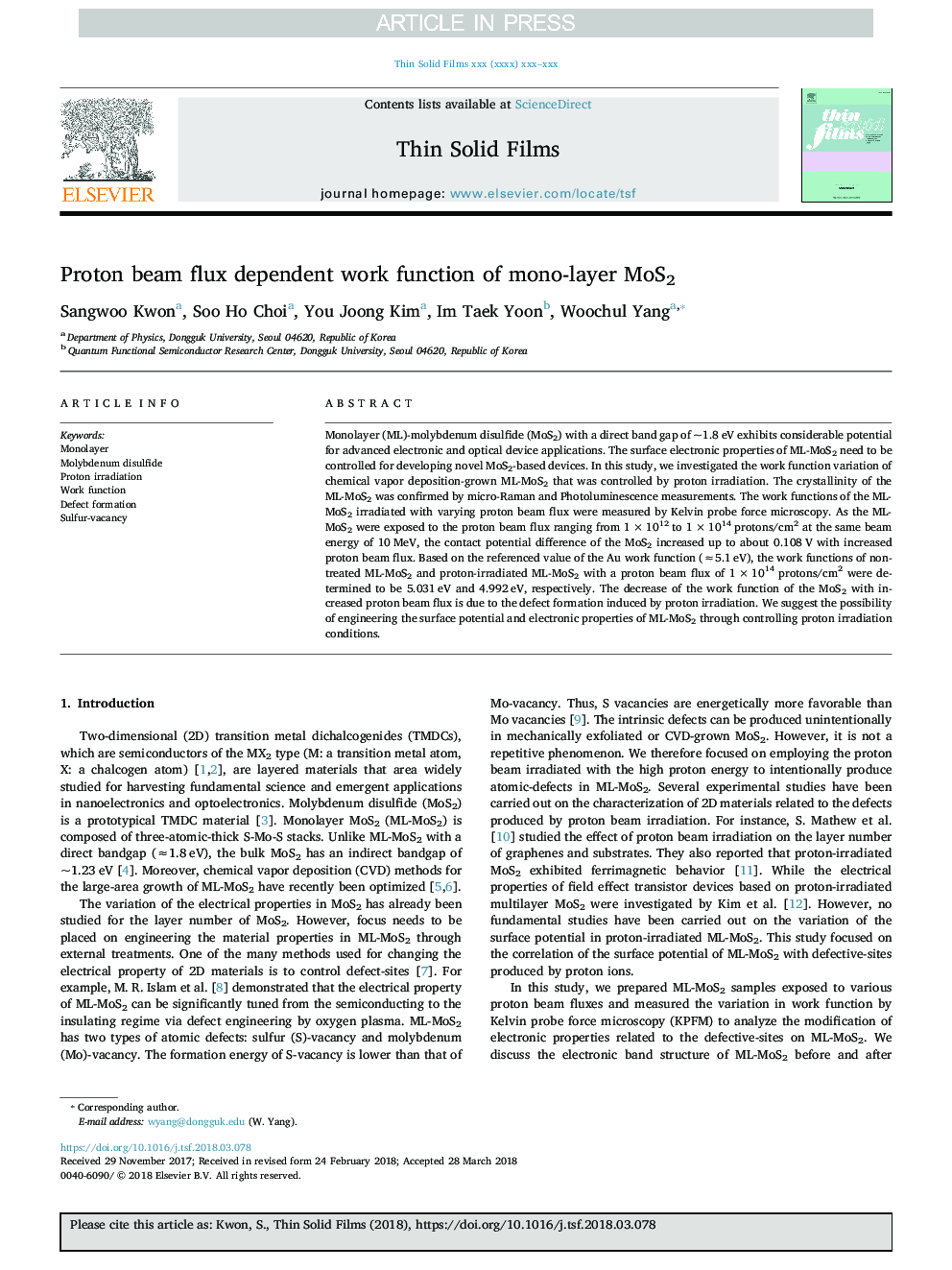| Article ID | Journal | Published Year | Pages | File Type |
|---|---|---|---|---|
| 8032608 | Thin Solid Films | 2018 | 5 Pages |
Abstract
Monolayer (ML)-molybdenum disulfide (MoS2) with a direct band gap of ~1.8â¯eV exhibits considerable potential for advanced electronic and optical device applications. The surface electronic properties of ML-MoS2 need to be controlled for developing novel MoS2-based devices. In this study, we investigated the work function variation of chemical vapor deposition-grown ML-MoS2 that was controlled by proton irradiation. The crystallinity of the ML-MoS2 was confirmed by micro-Raman and Photoluminescence measurements. The work functions of the ML-MoS2 irradiated with varying proton beam flux were measured by Kelvin probe force microscopy. As the ML-MoS2 were exposed to the proton beam flux ranging from 1â¯Ãâ¯1012 to 1â¯Ãâ¯1014 protons/cm2 at the same beam energy of 10â¯MeV, the contact potential difference of the MoS2 increased up to about 0.108â¯V with increased proton beam flux. Based on the referenced value of the Au work function (â5.1â¯eV), the work functions of non-treated ML-MoS2 and proton-irradiated ML-MoS2 with a proton beam flux of 1â¯Ãâ¯1014 protons/cm2 were determined to be 5.031â¯eV and 4.992â¯eV, respectively. The decrease of the work function of the MoS2 with increased proton beam flux is due to the defect formation induced by proton irradiation. We suggest the possibility of engineering the surface potential and electronic properties of ML-MoS2 through controlling proton irradiation conditions.
Related Topics
Physical Sciences and Engineering
Materials Science
Nanotechnology
Authors
Sangwoo Kwon, Soo Ho Choi, You Joong Kim, Im Taek Yoon, Woochul Yang,
